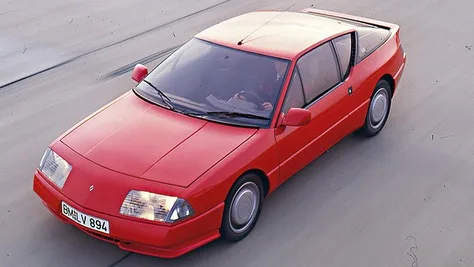40 years since the premiere of that Renault that was a threat to Ferrari and Porsche
Exactly four decades ago, on February 4, 1985, at the Amsterdam Motor Show, a very attractive car was presented to the public for the first time - the all-new Alpine V6 sports coupe. This is the most powerful and fastest production model of Renault, which quite seriously enters the territory of Ferrari and Porsche, and is available in two versions - GT and Turbo. The Alpine V6 has implemented some of the most advanced engineering solutions for its time, which provide very good dynamic performance and high power, combined with high comfort, stability and safety caseta directie spidan pret.

The stylish bodywork has been tested in a wind tunnel and is distinguished by a very low drag coefficient (Cd) of 0.28 for the GT and 0.30 for the Turbo, making the Alpine V6 a favorite among similar sports coupes. The angle between the hood and the strongly sloping windshield is only 23 degrees.
The engine is a 6-cylinder with a working volume of 2849 cc (cylinder diameter and piston stroke 91x73 mm), V-shaped arrangement of the cylinders with one overhead camshaft, with the cylinder heads and block cast from aluminum alloy. The GT engine has normal atmospheric charging, at a compression ratio of 9.5 and is equipped with two Solex carburetors with falling flow. The gasoline pump is electric, and the ignition system is electronic of the contactless type. The maximum power reaches 116 kW at 5750/min, and the maximum torque is 221 Nm at 3500 rpm. The Turbo engine has a smaller working volume of 2458 cc (cylinder diameter and piston stroke 91x63 mm) and works with supercharging and electronic injection of gasoline into the Renix intake manifold. It is carried out by a Garrett T3 turbocharger and an intercooler. A special anti-knock sensor is also installed. Thus, the maximum power is increased to an impressive 147 kW at 5750 rpm, and the maximum torque reaches 285 Nm at 2500 rpm.
The five-speed gearbox is identical in both versions. The suspension consists of lower wishbones, springs with centrally located telescopic shock absorbers and torsion stabilizers for lateral oscillations. The brake system is hydraulic dual-circuit with servo-assistance and disc brakes on all wheels. Based on the self-supporting bodywork is a steel frame, with almost all other parts made of various types of plastics, connected to the frame mainly by gluing. The floor is made of high-pressure pressed polyester, and the roof, cross walls, sills, rear fenders, windshield frame, doors and their outer parts, front and rear spoilers and other components are made of low-pressure pressed polyester. The engine cover is made of porous polyurethane, reinforced with glass fibers. The front fenders and both bumpers are also made of polyurethane, and the fuel tank is made of polyethylene. As a result of all this, the GT's curb weight is 1110 kg, and the Turbo's 1180 kg.
The maximum speed of the GT is 235 km/h, and the Turbo reaches 250 km/h, with acceleration from 0 to 100 km/h in both versions being 8.0 and 7.0 seconds respectively.
- 2025-02-12 - Volkswagen's first all-terrain van was created half a century ago
- 2025-02-11 - Is 89 kilometers of mileage enough?
- 2025-02-10 - Renault ushers in a new era with electric light commercial vehicles
- 2025-02-08 - De Tomaso Pantera L: the forgotten Italian-American V8 legend
- 2025-02-07 - 1.8 percent of cars in Europe are electric
- 2025-02-06 - Renault 21: a strong echo of 1980s fashion
- 2025-02-05 - The 5-door Jimny attacks another market
- 2025-02-04 - The new BMW M3 CS Touring: with the family and 550 hp on the track
- 2025-02-03 - European car industry against CO2 fines
- 2025-02-02 - Business in 2024: Market slows down Bosch growth












